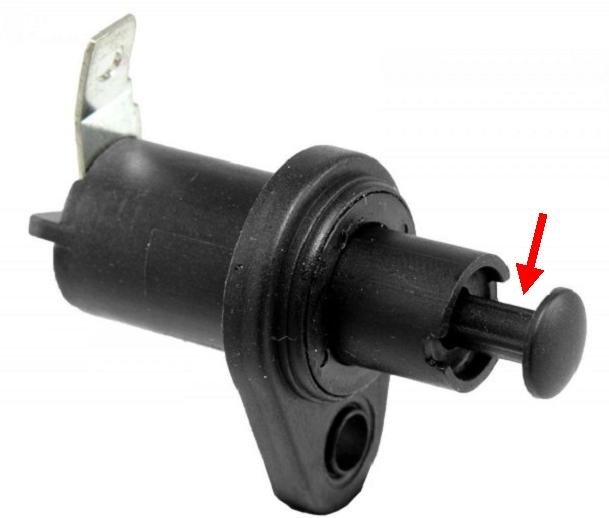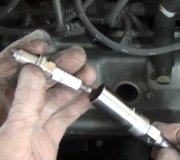You're at the right place. In other online forums, anyone can jump in, then too many responses seriously confuse the issue. Here, you're in a private conversation with just me, and any other experts who want to add a comment. We try to stick with you until the problem is solved.
Are you willing to buy a digital volt / ohm / amp meter and some small jumper wires? Harbor Freight Tools has a perfectly acceptable meter for around seven bucks. They often go on sale for even less. When shopping for a meter, don't waste your money on features you won't use. Some expensive ones can measure frequency. Most of us never do that. I personally do not like auto-ranging meters for a number of reasons. They do their job just fine, and it could even be a slight benefit for this test, buy I have around 15 meters, and every one needs to have the range switched to manually.
If you want to pursue this, I'll describe what to do in a lot more detail. The biggest clinker here, starting with mid '90s models, is there is a computer that needs up to 20 minutes to go to "sleep" mode. During that 20 minutes, it can draw up to three amps. Most digital meters have an internal 2-amp fuse that will blow, so it can't be put in the circuit until that computer goes to sleep. The frustrating part is it will wake up again for another 20 minutes every time you break the circuit. That could be from momentarily disconnecting a battery cable, or, simply from switching ranges on the meter. To avoid all this frustration, all you need to do once the negative battery cable is removed, is to reconnect it with a small jumper cable. Harbor Freight Tools has those too for about five bucks for a dozen. The pack usually includes two each of six different colors.
I'll draw a diagram too of how to make the connections. Most meters come with a pair of probes, and rather than holding them in place with two hands while you do your work with your other two hands, use two of those jumper wires to connect the meter's probes. That way you don't have to hang onto them while you wait for the computer to time out.
Once everything is hooked up and the computer has gone to sleep, you'll need to remove one fuse, then look at the meter to see if current dropped significantly. It's customary to start at the fuse box inside the vehicle, so you'll need to do something to prevent the interior lights from turning on. That could involve removing the driver's door switch and unplugging it. A lot of them now are built into the door latch assembly. For those, just use a screwdriver shank to trip the latch closed.
Now that I've shared all that wondrous information, we should back up and consider a totally different possibility. It would be smart to have the charging system professionally load-tested first. This can not be done at an auto parts store with their hand-held testers. Those do a fine job of telling you if the alternator is putting out something or nothing, but that's all. We need to know exactly how much current it can produce. There are three possibilities for what will be found with the full-load output current test. There were three different alternators available for this model. The most common was the 90-amp alternator, so I'll use that for the rest of this sad story.
During the full-load test, the alternator is going to develop very close to 90 amps, 0 amps, or around 30 amps. 90 amps means it is working properly. 0 amps means it is dead, most commonly due to worn brushes, which are fairly easy and cheap to replace. 30 amps is what we're looking for. That is the culprit that is responsible for a lot of problems with an elusive solution. All alternators have six "diodes". Those are one-way valves for electrical current flow. It is not that uncommon for one of them to fail. When that happens, that alternator will only be able to develop exactly one third of its rated maximum current. That's what we're on the lookout for. In this story, 30 amps is not enough to run the entire electrical system under all conditions. The battery has to make up the difference until it slowly runs down over days or weeks.
The electric fuel pump can draw close to ten amps. Same for a pair of head lamp bulbs on "low", and same for a heater blower motor on a mid speed. Now add the injectors, ignition system, radio, and tail lights, and you're way beyond what the alternator can deliver. The typical symptom would be the engine cranks okay and starts most of the time, but if you start and stop a bunch of times during the day, eventually the engine will start cranking slower and slower. Once it's running, it usually won't stall alongside the road and let you sit, but it might let you sit in a parking lot or your driveway. Even if you do make it home, with the normal current drain overnight, the engine might not start the next morning. What's happening is the battery runs down from cranking the engine, then, once the engine is running, the alternator struggles to run the electrical system, but it doesn't have anything left over to recharge the battery.
It's important too to point out there is no such thing as a weak alternator, except for that diode problem. If you were to find, for example, your alternator can only develop 45 amps during the full-load test, that is not because it is weak. That indicates you either have a good 45-amp alternator, or you have a 136-amp alternator with one bad diode. No car uses an alternator as small as a 45-amp unit since the '70s, so we can rule that out. You can assume you have a larger alternator with a bad diode. The additional clue is the load tester will indicate a very high "ripple" voltage. That takes some time to explain, but you would mainly observe that as unusually loud whine on AM radio. A few load testers provide a printout of these important numbers, and ripple voltage will be listed as a voltage. Most do not, so we have to write them down on the repair order. For those, ripple voltage is only shown on a relative bar chart. It will be either "low" or "high" with no specific voltage. That is fine. We just want to know if it is high. When you have this test performed, be sure to specify you want to know the charging voltage, the full-load output current, and the ripple voltage. To find all of this out, the test only takes less than half a minute. It takes far longer to wheel the tester over to the vehicle and connect the few cables.
Monday, October 22nd, 2018 AT 6:59 PM




